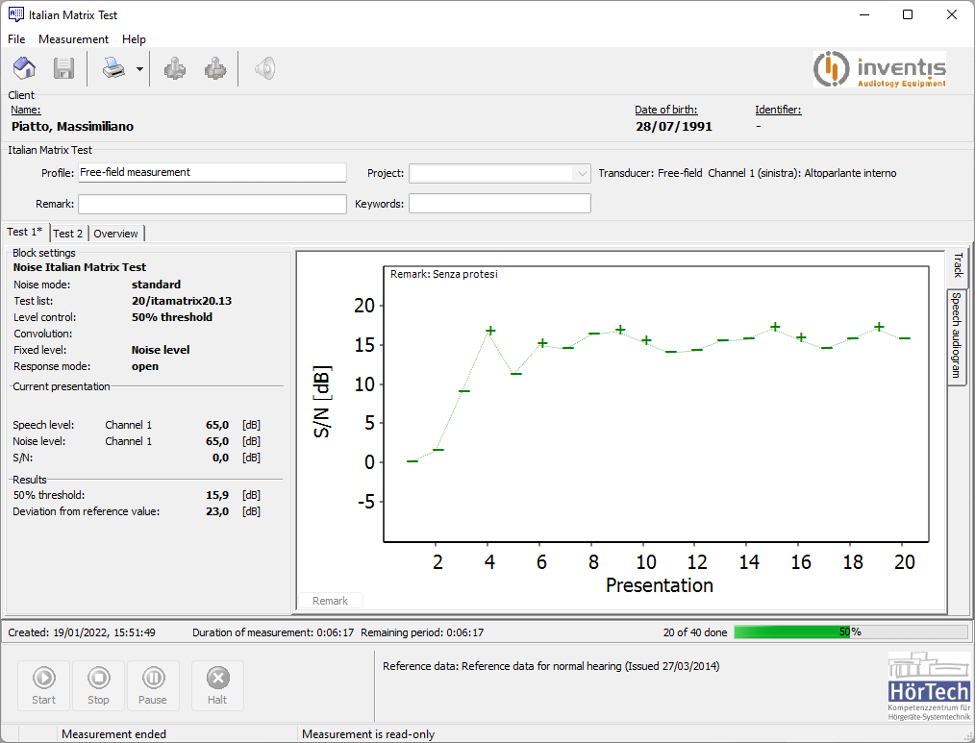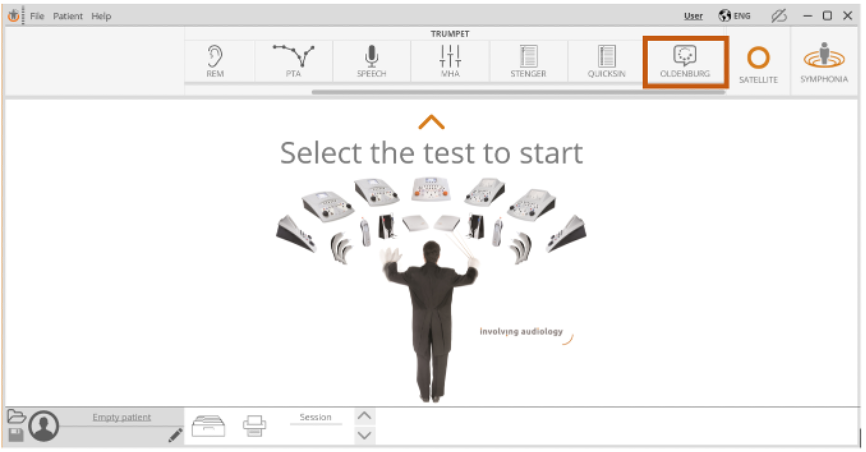Question
How can I measure speech recognition with the Oldenburg International Matrix test and Inventis Trumpet system?
Answer
Speech communication is one of the most critical aspects of the human auditory system. Therefore, hearing loss diagnostics and rehabilitation should include speech audiometry in noise.
Matrix Tests resemble everyday situations (listening to complete sentences in noise) while being accurate measurement tools. Matrix Sentence Tests are adaptive speech in noise tests for determining the speech reception threshold SRT (50% threshold of speech intelligibility in noise) with a precision in the range of ±1 dB. Small differences in SRT can mean considerable differences in speech intelligibility: an SRT difference of just 3 dB can mean a difference in speech intelligibility of up to 40% for normal-hearing listeners.

Figure 1. Oldenburg International Matrix Test – main software screen.
Matrix Tests can be conducted with test lists of 20 or 30 sentences. The duration of a typical 20 item test list is about 4 minutes. Test lists are generated by creating seemingly random sentences from an inventory (a matrix) of fifty words, divided into five categories (subject, verb, etc.), i.e., ten different words per category. This way, up to 100,000 different sentences can be generated, making it impossible to memorize them. Thus, Matrix Tests can be repeatedly conducted with the same patient after a short training without affecting the test results.
The Oldenburg International Matrix Test can be easily performed using Maestro software with the Trumpet AUD.

Figure 2. Oldenburg International Matrix Test selectable from Maestro software main screen.
Connect your Trumpet AUD to your computer, select the patient from the Maestro database or Noah and launch the Matrix test. The test application will automatically produce the sentences on the desired outputs using the Trumpet. The patient will be asked to repeat what they understood. The operator marks on the screen what words have been correctly heard, and the software will then adapt the SNR of the following sentence accordingly.
Key Features of International Matrix Tests available in Maestro:
- Relevant for daily life
- Quick and reliable threshold measurement
- Unlimited repeated measurements possible
- Suitable for any degree of hearing loss
- Wide language portfolio
To learn more about Inventis, please visit their Corporate Partner page on AudiologyOnline or inventis.it.

